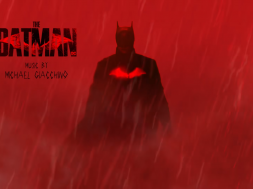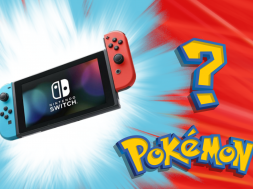

Kyoto Animation are frequently blamed – or credited, depending on who you ask – for launching the moé trend in contemporary anime, or at the very least perpetuating it to a greater extent than most others. It’s hard to argue against that point, even as a massive fan of K-On! and Nichijou I have to admit that the explosive popularity of moé shows and characters is more than a little bit their fault and if it’s not something you’re into, it’s probably very easy to point the finger their way and wag it disapprovingly.
That said, KyoAni have done their fair share to prove that they’re far more than one-trick-moé-ponies. Chuunibyou was an interesting experiment, mixing generic rom-com tropes with moé characters and throwing in random bursts of fantastical, other-wordly combat to shake things up. With Kyoukai no Kanata, KyoAni gave itself another ball to juggle in the form of a supernatural setting and somehow, they managed to keep all their balls in the air. Kyoukai no Kanata was the standout show from 2013’s fall anime line-up.
One area where KyoAni are seriously hit and miss is in their music. With output as varied as theirs is, it’s understandable that there’s very little in the way of musical uniformity across their work and most of it is generic, anime-cookie-cutter stuff that barely holds your attention. That’s what the moé is there for, after all. Kyoukai no Kanata, however, has an exceptional score composed by Nanase Hikaru and today, we’ll take a look at some of it’s choice cuts.
Sukoshi Fushigina Monogatari no Kaimaku
KnK has one foot very firmly in the supernatural fantasy genre and while the score doesn’t rely on cliché’s very often, the opening piece Sukoshi Fushigina Monogatari no Kaimaku, wears it’s Harry Potter influence proudly. Crucially, it merges it with a delicacy in instrumentation that betrays it’s initial appearance slightly, never reaching the John Williams-esque orchestral heights you feel like it wants to. The thing is, it doesn’t want to. It’s got one job and one job only; to intrigue.
Shindo Shashin-kan
There is a romantic story hiding beneath all the ghosts and fireworks and occasionally, Hikaru finds time to reference it in her score. The piano and clarinet move in unison, with the piano a third below, to hint at a chord progression that gradually reveals itself over the course of two minutes. It’s charming, delicate and evocative without being overbearing and does quite a lot, with not very much.
Nozomanu Tatakai
Hikaru’s score never enters the realm of orchestral indulgence. It never even approaches it. It’s in a different postcode altogether. Even when the score intensifies, such as in Nozomanu Tatakai, it does so by contrasting soothing choral melodies with tribal percussion and some light orchestration to fill out the texture. It’s by no means small, but it’s certainly not as epic as other anime scores and it’s that restraint that gives her work on KnK an incredibly unique, ethereal quality that you just won’t get elsewhere.
Jibun To No Ketachaku
Another flirtation with intensity comes with Jibun To No Ketachaku, this time pairing the percussive, orchestral concepts from Nozomanu Tatakai with that sense of child-like wonderment so present in the opening piece.
Yakusoku no Kizuna
I could have written this column without including this incredible piece of cultural satire from the series, along with the incredible piece of J-Pop that goes with it, Yakusoku no Kizuna, but I didn’t want to. So enjoy.
***
Kyoukai no Kanata is one of those unfortunate shows that did so much so well for so long only to trip at the very last hurdle and although it’s ending was muddled and directionless, the show itself was hugely enjoyable from beginning to just before the end and Hikaru’s score was subtle and insidious in all the right ways.











